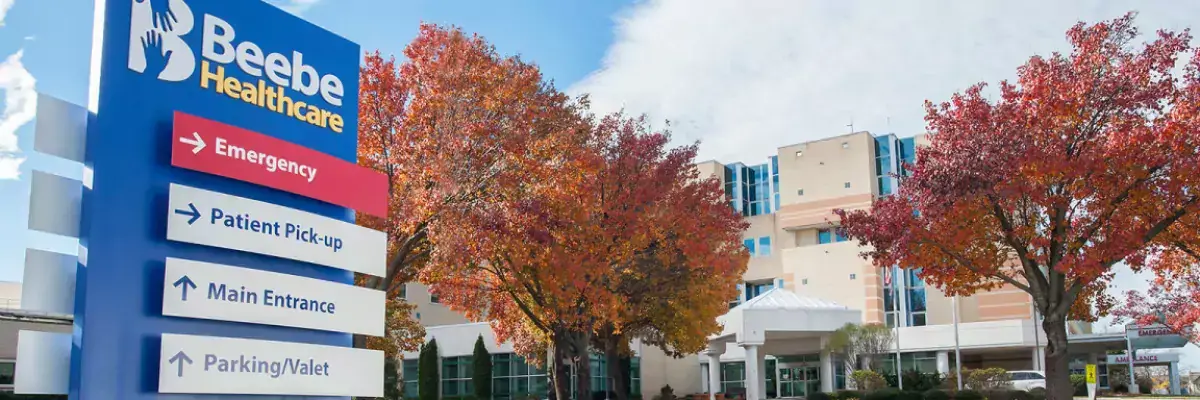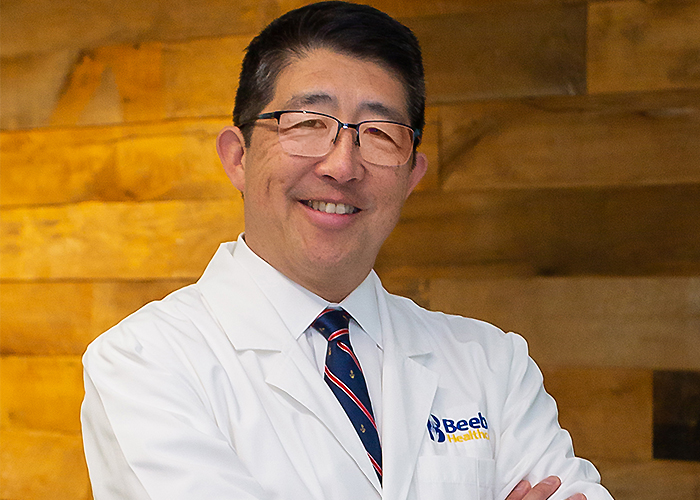Leaving Your Home in a COVID-19 World
The Top Things To Remember When You Walk Out the Door
By Dr. William Chasanov & Marcy Jack
COVID-19 is an evolving situation, so information changes quickly. The information provided is the best available at the time of publication.

Everyone should be remaining at home as much as possible to prevent the spread of coronavirus (COVID-19). However, there are times you may need to leave your home. Some examples of necessary reasons to leave your home include:
• Grocery shopping
• Pharmacy visit to pick up medications
• Necessary medical appointments (although Beebe is providing telemedicine visits)
• Work, if you are an essential employee
Preparing to Go Out
Prior to heading out, start by making a list at home so that you know exactly what you need when you get to the store or pharmacy. You should be limiting your trips, so try to purchase enough groceries or medications to last at least a week, more if possible.
Before you leave your house, make sure you have your list, wallet, cloth face covering, and hand sanitizer or alcohol-based hand wipes.
It is best to go to the store by yourself. You should not be traveling with other members of your family if that can be avoided. Keeping your family members at home, keeps them safe, and also makes it easier for you to monitor what is touched during the trip so you can better sanitize and protect yourself.
Choose a store where you can likely get everything on your list. This will reduce your risk of coming in contact with the COVID-19 virus because you will limit the number of stops you have to make.
At the Store
When you arrive at the grocery store, remind yourself to remain 6-feet away from others and mentally prepare yourself to avoid touching your face while in the store. Before you exit your car, use hand sanitizer on both hands and then affix your cloth face covering. This allows you to know that your hands are clean prior to entering the store.
When you enter the store and get a cart, be sure to use a sanitizing hand wipe or store-provided sanitizing wipe on the main areas of the cart that you will touch. You should use a sanitizing hand wipe or your hand sanitizer again on your own hands if you had to touch the cart before wiping it down.
As you enter the store, have a plan in mind. Have your list available and move through the store as quickly as possible, avoiding aisles where you do not need anything.
Again, remember to stay 6-feet away from other people – that’s the length of a hockey stick. Many grocery stores have implemented new procedures so that aisles are one way to reduce the number of people in them. Be sure to follow all instructions and look for markings on the floor.
Once you have all of your needed items, head to a register. Most stores are requiring their employees to sanitize the register area after each customer, but this might not always be the case. If you are concerned, ask the employee if they can sanitize the register and belt before you put your items on.
When paying, using a credit card is best as then you will not have to handle cash or change, which could have been touched by many other people. Bag your items and place them in your cart.
As you exit the store, please use hand sanitizing wipes or hand sanitizer again as you likely touched a credit card keypad and perhaps other surfaces of the check-out area.
Please remember that it is not currently recommended to wear gloves when out in public. Gloves do not provide more protection than proper hand washing & sanitizing and may cause more harm than benefit because you may contaminate yourself when later removing the gloves.
Heading Home
Take your items to your car and store them on the floor of your car or in the trunk if possible. Because the bags might have been touched by others, it is a great idea to not put them on seats where you or family members might sit.
Once everything is loaded, the cart is returned, and the doors are shut, it is a good idea to use hand sanitizer at that exact moment and before you get back in the car. Sanitize your hands well and then use the sanitizer on your door handles or anywhere you might have touched while loading the car.
Then enter your car and remove your mask. When removing your mask, be careful to fold the exterior facing side of the mask in and the mouth-side of the mask should be on the outside. This way, anything that may be on the outside of your mask will be contained and you will not touch it when you pick up the mask the next time.
Once you return home, unload your groceries. One good idea is to place the grocery bags on the floor instead of on your counters. Again, the bags could have been touched by others, so treat them as if they might be contaminated.
Unload your groceries and start putting them away. If you purchased fruits and vegetables, it is a great idea to wash them right away. You can also wash your hands while you are washing the produce in the sink with soap and water. Remember to wash for 20 seconds at least!
Soap is the best bet at this time as it dissolves the outside layer of the coronavirus, thus killing it.
At this time, we recommend throwing away the plastic bags instead of recycling them.
If you did not have fresh produce to wash, once everything is put away, you should wash your hands with soap and water. Be sure to get all sides of your hands and fingers, paying special attention to getting under your fingernails. Now is a great time to forego those long nails and go with a shorter manicure.
Then using hand sanitizer or wipes, go back through your process to get inside and wipe down things you might have touched, including your doorknobs. You may also want to wipe down your car steering wheel and door handles.
It is also a great idea to regularly wash your car keys and cell phone using either disinfecting wipes, hand sanitizer, or a little soap and water.
Store your cloth face covering in a paper bag or wash it immediately. Face masks can be washed in the washing machine or even in the dishwasher.
Other Types of Trips
If you have a necessary medical appointment, call ahead first to see if the visit can be accomplished using telemedicine. Telemedicine allows your provider to talk to you over a secure connection either with video or just with voice.
If telemedicine is not possible for your specific medical appointment, follow the same type of instructions as above to protect yourself.
If you are an essential employee, such as a healthcare worker, who must leave the house regularly for work, you will want to follow similar procedures each time. In many cases, our healthcare team members are removing all clothing upon arriving home and washing them immediately. We recommend using the warmest temperature setting allowed for the fabric and to ensure that soap is used which will kill any virus on your clothing.
If you are working outside the home at this time, you will also want to regularly clean the things you touch in your car and on your way into the house, including steering wheels, radio knobs, door handles or doorknobs, etc.
It is a great idea for everyone to clean their phones regularly. If you have a soft case that might be damaged by sanitizer or disinfecting wipes, now might be a time to remove that case or get a hard-cover case that is easier to clean. Or even go without a case for the time being.
We are all in this together and by taking precautions we can keep ourselves and our families safe.
For more information and resources related to COVID-19, please visit our website at www.beebehealthcare.org.
William Chasanov, DO, MBA, is Beebe’s COVID-19 Response Medical Director. He is also Beebe’s Clinical Transformation Leader and a physician with Beebe Infectious Disease and Travel Medicine.
Marcy Jack, JD, BSN, CPHRM, is a vice president and chief quality and safety officer at Beebe Healthcare. She oversees several departments, including Risk Management, Quality Commitment (to include Accreditation/Regulatory Readiness), Infection Prevention, Public Safety and Security, and Emergency Preparedness.



